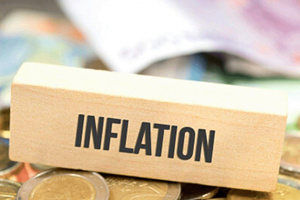Asia-Pacific Trade Agreement (APTA): A Pathway to Sustainable Development
The economic development in the Asia-Pacific region was made possible by actively participating in international trade. Trade enables countries to expand their market and allows access to the broader range of goods and services, including intermediate goods, at lower prices.
The Asia-Pacific Trade Agreement was among the first regional trade agreements negotiated and serves as an engine of sustainable development by promoting and facilitating trade and investment.
APTA started as the Bangkok Agreement in 1975 with Bangladesh, India, Lao PDR, the Republic of Korea and Sri Lanka. With accessions of China and Mongolia, it has grown into an integrated regional trade pivot in the Asia-Pacific region.
Since its establishment, APTA went through four rounds of tariff liberalization and extended the range of items benefiting from reduction of tariff rate charged.
10,800! The aggregate number of items possible to trade under reduced tariffs is over 10,000. For those items, the average tariff rate goes down from 10.6 percent to 7.1 percent for APTA. Furthermore, for the least developed countries in APTA, the number of concession items goes up to 12,000.
APTA’s rules of origin are quite simple for all parties, with additional flexibility for Least Developed Countries. The wholly obtained products are eligible for preferential treatment. Regardless of types of products, if it has more than 45 percent domestically added value, the preferential tariff can be applied. For the Least Developed Countries, the level of domestic value added is lowered to 35 percent. For some items such as organic chemicals and steel, one can choose either value addition or Change in Tariff Heading.
Besides the liberalization of tariffs, Participating States are engaged in negotiations on trade facilitation, trade in services, and investment.
APTA is open to all ESCAP developing countries. Why should your country join APTA? APTA is the only regional trade agreement connecting China, the Republic of Korea, and India who are the world’s top 10 importing countries. So it creates a market of over 2.7 billion customers and a large purchasing power.
Another feature of APTA is that it is development-friendly. It recognizes the need for policy space of countries at different levels of development. Also, by allowing Participating States to maintain some tariff protection, it enables them to limit sectoral and structural shocks associated with import liberalization.
If interested to join, the APTA secretariat in cooperation with Participating States can provide support.
Your country can be a new member of APTA, it will continue to evolve as a comprehensive economic partnership agreement with large untapped potential.
Join APTA! Be a part of Asia-Pacific’s sustainable future.
APTA, pathway for sustainable development.
Oyu Vasha: The agreement will promote investments from APTA member countries, contributing to the diversification of the industrial sector and laying the bases for more sustainable development. Also, negotiations in trade facilitation, service and investment will help address some of the issues a land-locked country like Mongolia still faces.
Armida Salsiah Alisjahbahbana: I encourage ESCAP developing member states to join APTA to better connect countries across different sub-regions in Asia and the Pacific and therefore facilitating regional economic cooperation. As the secretariat, ESCAP is committed to support Participating States and prospective members in achieving sustainable development through APTA.















